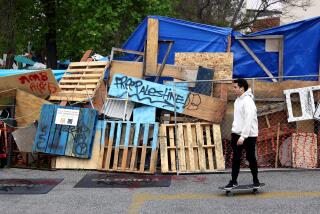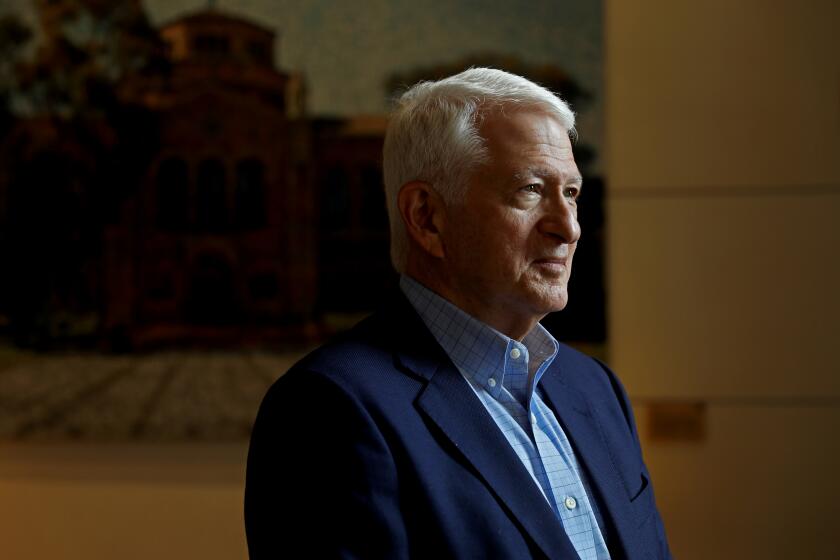PICO-UNION : Liquor Stores Called a Threat to Safety
Residents recently pointed out liquor stores as the chief culprit contributing to rising drug and alcohol abuse among youth in the area, along with other factors, including insufficient narcotics policing and poor examples by adults.
More than 200 Pico-Union residents, many of them parents, arrived at these conclusions last weekend at a community forum sponsored by Pico-Union en Accion (Pico Union in Action), a substance-abuse prevention program of the Clinica Monsignor Oscar A. Romero.
Held at Angelica Lutheran Church, the forum allowed participants to break up into groups and discuss problems they felt lead to substance abuse and gang involvement among local youth, along with neighborhood crime in general. The groups came up with a variety of contributing factors, but most agreed on one thing: Liquor stores cause problems.
This conclusion echoes the results of a recently released USC study, which found a direct link between the number of liquor stores in an area and its violent crime rate.
According to a report compiled by Clinica Romero, there are 238 liquor stores in the Pico-Union/Westlake area. Many of them are hangouts for gangs and drug dealers who sell to local youth, said clinic director Margie Martinez.
“Liquor stores are a big problem here,” Martinez said. “The efforts the South-Central community has made to clean up their area has resulted in gangs migrating up here and trafficking outside our liquor stores.”
Unlike their neighbors to the south, who have effectively blocked the rebuilding of several riot-damaged liquor stores, Pico-Union residents have been unable to control the liquor store situation in their area. This is largely because many of them are immigrants who have little knowledge of English, let alone of ways to access the system and effect change, Martinez said.
The Pico-Union residents also cited insufficient police protection, a lack of activities for young people, a lack of information in the community about social services, the pressures of poverty and bad examples from parents as some of the main reasons youths in the area go astray.
“It’s true we celebrate birthdays and special occasions and have parties, but when we do, we drink,” one discussion group leader said in Spanish. “We ask our children, ‘Get me a beer, please.’ How can we expect them to stay off the street and respect us if we don’t respect ourselves?”
Another group leader urged her peers to put pressure on city officials to boost police protection in the area, especially around zones where drug dealers do business. The LAPD’s heavily overburdened Rampart Division, which patrols Pico-Union, has no narcotics unit, Martinez said.
“Narcotics offenses are competing with murders in this area,” she said. “If police have to choose between a dead body and a drug sale, which are they going to concentrate on?” The results of last weekend’s forum will be synthesized into a plan of action for Pico-Union en Accion, which consists of three community subcommittees that have spent several months documenting liquor sales to minors and the lack of public security and social services in the area.
Once they review the results, the subcommittees will take responsibility for organizing residents in their neighborhoods to take political action on behalf of the problems they feel the city must find solutions for, Martinez said.
“Our big goal is to put pressure on City Hall to get these problems solved,” she said. “Pico-Union en Accion is trying to give people the tools to do something here.”
More to Read
Start your day right
Sign up for Essential California for news, features and recommendations from the L.A. Times and beyond in your inbox six days a week.
You may occasionally receive promotional content from the Los Angeles Times.






